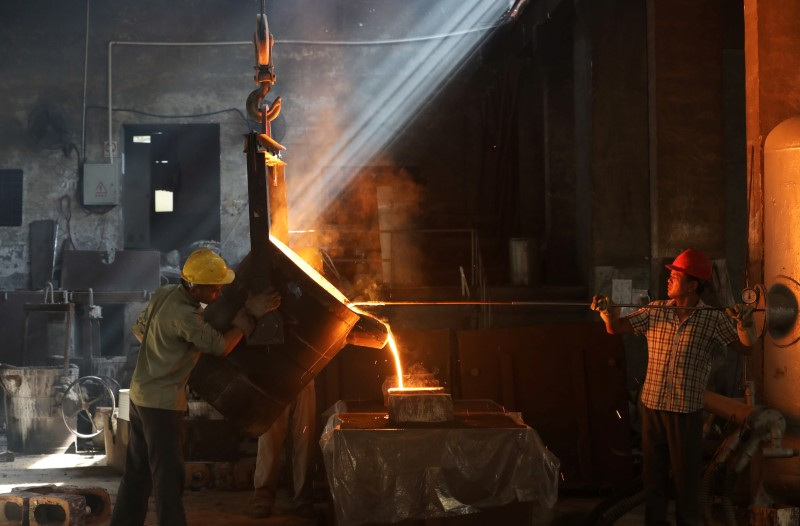By Clyde Russell
LAUNCESTON, Australia (Reuters) -The price of iron ore has dropped for a sixth consecutive week as China's steel sector continues to struggle and port inventories of the raw material stop rising.
Singapore Exchange (OTC:SPXCY) futures ended at $101.49 a metric ton on Aug. 9, up a touch from the four-month closing low of $100.14 the previous day.
The benchmark contract has declined every week since July 5 and is down 29% from its peak so far in 2024 of $143.60 a ton, reached in the first week of the year.
While the declining price is not quite a capitulation, it does show market sentiment has shifted away from optimism that Beijing's efforts to boost the beleaguered construction sector would boost steel demand, to the reality that steel mills are struggling for profits and sales.
Recent price moves and data on China's steel sector, which accounts for just over half of global output, have been bearish.
Benchmark Shanghai steel rebar contracts ended last week at 3,286 yuan ($458.55) a ton, the lowest close since October 2020, and they are now down 20% since the start of the year.
The China Iron and Steel Association said crude steel output at its members' mills was 1.9735 million tons per day in the period from July 21 to 31, down 8.1% from the prior 10-day period, with the industry association blaming soft prices.
Official steel production data for July is expected this week, but is unlikely to alter the declining trend seen so far in 2024, with National Bureau of Statistics data showing crude steel output of 530.7 million tons in the first half of this year was down 1.1% from the corresponding 2023 period.
China's steel purchasing managers' index fell by 5.3 points to a one-year low of 42.5 points in July, substantially below the 50 level that demarcates expansion from contraction, data from the China Steel Logistics Professional Committee showed.
IRON ORE IMPORTS
While steel's woes have weighed on iron ore prices, so far this year import volumes have held up fairly well.
This has largely been driven by restocking with port inventories monitored by consultants SteelHome rising from a seven-year low of 104.9 million tons in October to a 27-month high of 151.8 million in the week to July 26.
In the two weeks since, stockpiles have eased slightly to 150.4 million tons in the seven days to Aug. 9, suggesting that inventory restocking may be largely complete.
It is also worth noting that China's iron ore imports rose 6.7% to 713.77 million tons in the first seven months of the year compared to the same period in 2023.
This was an increase of 44.31 million tons, a figure close to the increase of 46.9 million in port inventories since the October low.
It appears that steel mills and traders have taken advantage of the declining trend in iron ore prices to restore inventories, but now that they are at relatively high levels, the question is whether there is any appetite to continue adding to them.
It seems that August's iron ore imports will remain healthy, with commodity analysts Kpler tracking 97 million tons so far, a figure likely to rise before the end of the month as more cargoes are assessed.
July's official imports were 102.81 million tons, and the trend so far this year has seen imports anchored in a narrow range either side of 100 million.

But with steel output declining and the full year unlikely to match last year's 1.02 billion tons, it is hard to be bullish on iron ore import volumes and prices.
The opinions expressed here are those of the author, a columnist for Reuters.